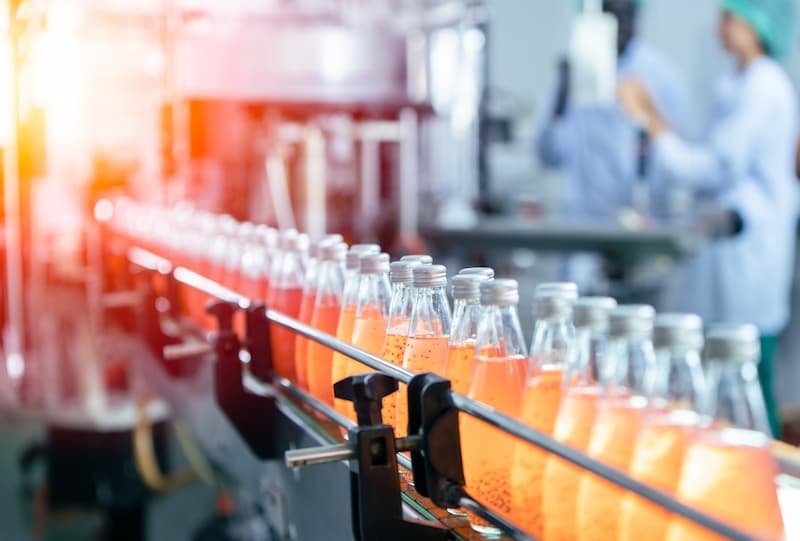Thermal imaging is a non-invasive tool for assessing, diagnosing and monitoring the thermal properties of various industrial applications, but they are also an integral part of manufacturing.
Some work processes can be monitored with a visual camera, but there are many conditional aspects that can’t be seen on the visual spectrum and require a thermal imaging camera
These cameras are installed at various stages of production to provide vital IR (infrared radiation) data visually presented through thermal images. This makes assessing the condition of your products or equipment manageable for your team to monitor. Still, thanks to technological improvements, thermal imaging is now quite often an incorporated element of a machine vision system.
What Is Machine Vision?
Many companies within the manufacturing industry rely on machine vision cameras to be able to maintain a high level of quality assurance. Machine vision systems are a network of cameras and sensors that feed data to a software algorithm. Metaphorically, this data flow allows the machine to see what it's doing and monitor the products for inconsistencies. When specific defects occur, pre-programmed commands will enable the machine to act accordingly without the need for human interruptions.
Thermal imaging cameras are a practical tool for this goal. The colours on the thermal image provide the software with valuable data that can tell them the status of the product in comparison to the stated norms. For example, the process of filling opaque bottles at a brewery can be monitored with a thermal imaging camera and quickly reveal which bottles have been missed and are not filled correctly. The machine can then remove those bottles automatically or flag them for attention by the workers nearby.
This helps the company automate complex visual inspections as well as machine programming. In addition, you'll find machine vision systems used for flaw detection, measurements, positioning and identification.
Thermal Cameras in Food Manufacturing
Automated inspections are a service commonly offered by high-end thermal imaging cameras for many different industries for condition monitoring of large equipment, but they can also be employed to monitor the temperature of production and packaging lines within food manufacturing.
The food manufacturing industry demands a high level of detail regarding monitoring their products. Every stage of production and storage needs to be maintained at specific temperatures to ensure that perishable goods are safe for consumption. Thermal imaging cameras are adept at providing this vital temperature information remotely. This non-invasive monitoring can be used effectively at any stage of food manufacture, whether it's their refrigeration, their cooked status, or the integrity of their packaging.
Pattern matching is standard when using a thermal camera to monitor food packaging. This entails a 100% inspection of the heat-sealed plastic cellophane used to seal most food products. When installed on the production line, the thermal cameras can read the warm temperature coming from the edges of the newly attached film. This temperature can be analysed and compared with records of successfully sealed products with the appropriate software.
Quality assurance is an essential part of any food manufacturing. It is made immensely easier with thermal imaging cameras as they remove the need for taking physical temperatures from test products. With these cameras, you can check 100% of your products and remove any defective ones.
Thermal Cameras in Electronic Development
Thermal imaging is the most efficient way of collecting valuable temperature data. It’s a popular tool within the electronics industry as it can assist with their quality assurance by helping them maintain consistent thermal uniformity. In addition, heat dissipation is essential for the complex electronics being developed nowadays. By adding thermal imaging cameras into the quality assurance process, technicians are able to find hot spots and defective micro components and correct them before supplying a perfect product.
Thermography in the Automotive Industry
Testing vehicles during construction requires intense evaluation of their components to ensure the safety of the eventual customer. The most effective way of assessing vehicles is by conducting thermal imaging surveys of them in operation.
The vehicle's engine can be monitored whilst running with these non-invasive cameras. Anomalies can be revealed visually in the thermal image; an excess of heat in unexpected places can reveal weaknesses in its construction that could become disastrous later. Additionally, any moving components incurring undesigned friction will generate heat that will fast become damaging wear and tear.
A vehicle's heating can be assessed similarly to determining a building's heating. By using a thermal camera, you can collect thermal readings on any heated windows or seats to spot any breaks in the heat flow and repair.
Tires and brakes can be tested thanks to thermal inspections. The natural friction required for braking can be assessed and compared to previous results for consistency. Additionally, one-sided braking can cause hard-to-spot damage to the brake disc, and repeated one-sided breaking will lead to disaster, so discovering this and correcting it is vital for vehicle safety.
Most vehicle safety tests will be very destructive to the car in question, with the well-known 'crash test' being the most popular. Thermography eliminates this expensive waste by providing the necessary information in non-destructive ways. Here, you can learn more about how thermal cameras are used in the automotive industry in our related blog.
At Thermascan, we pride ourselves on stocking a broad range of thermal imaging cameras for hire and sale. Our high-end professional cameras have been successfully used for a broad range of applications; find out how we can help your business with its quality assurance by browsing our camera range today.




